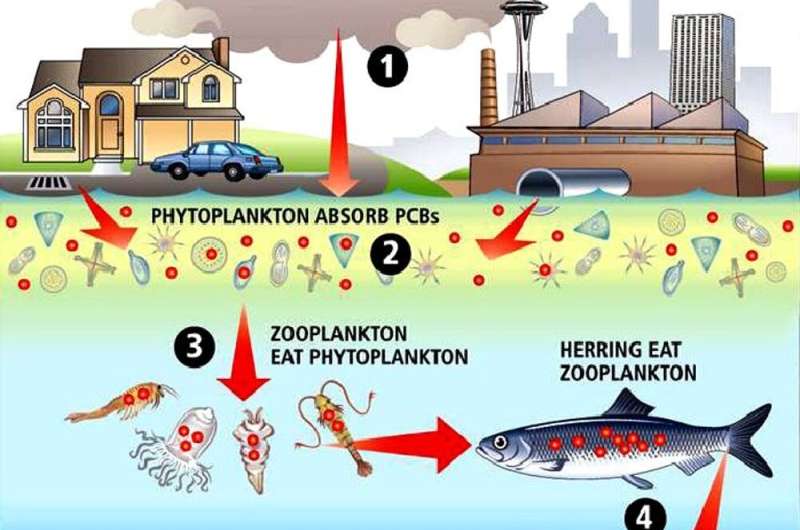Coastal landfills risk leaking long-banned toxic chemicals into the ocean

Five years ago, a killer whale called Lulu washed up on the shores of Scotland. She was thought to be over 20 years old, though autopsies revealed she had never had any offspring. Tissues recovered from Lulu suggested she was one of the most . She came from the UK's only resident killer whales, a group of eight, none of which had ever had young and are now considered infertile from pollution.
like PCBs are chemical contaminants that take a long time to break down in the environment and often still cause harm to humans and wildlife many decades after they are banned. Many legacy pollutants have been buried in landfills out of our sight and therefore out of our minds. PCBs or polychlorinated biphenols were used in electrical components and many other materials between the 1930s and 1970s, before being phased out around the world after concerns about their toxicity and ability to accumulate through the food chain. In total, over a were produced. A third of this has already been released to the environment, but up to two-thirds is still locked up in either old landfill or storage sites or materials.
While some studies have indicated that PCBs released into the environment are in , many marine mammals have concentrations way above safe thresholds for their . This has led some scientists to predict dramatic declines and extinction of some killer whale populations in the next . PCB levels in killer whales appear very much dependent on the geographical populations and their diets, with than the fish eaters or the whales with mixed diets.
If the scientists are correct in their predictions, then some marine mammals are at a critical juncture in their survival. The last thing they or future generations need is a second wave of legacy contaminants released from landfills.

The second wave
Historic landfills—those built before the introduction of stringent environmental regulation—are a ticking time bomb, containing millions of tons of hazardous, industrial, commercial, domestic and in some cases low-level and . Depending on the age of the landfill, they can contain substances that are now banned, such as PCBs and asbestos, and materials that are only just starting to cause concern, such as plastics. In addition, these sites predate legal requirements to record the waste they received or to engineer for pollution control.
In Europe alone there are almost and of these, around are situated on coasts at risk of with the to the marine environment.
There have already been examples of catastrophic flooding and erosion of historic landfills, for example, and in New Zealand, where flooding washed out the disused releasing waste over hundreds of kilometers of coastline. Such extreme weather events are predicted to increase in frequency under climate change scenarios and in England alone up could erode by 2055 if sea defenses are not maintained and across the UK more than .
None of the options are cheap
The presence of waste can constrain decisions on , for instance, by forcing continued maintenance of hard sea defenses or "hold the line" policies rather than more sustainable alternatives such as managed retreat or the restoration of coastlines to benefit .
However, none of these options are cheap. Authorities looked at one UK south coast landfill and estimated it would cost £200 million to hold the line or , while the restoration of Port Sunlight, Merseyside, cost . Given the potential number of coastal landfills at risk in the UK alone, projections for continued sea-level rise and increased frequency and severity of coastal flooding and erosion it is evident that the UK alone is looking at an issue that will cost billions to address.
This is a long-term societal problem that will cause significant problems for future generations if we ignore it today. That's why there is a need for national strategies and funding, and the issue can't be allowed to fall foul of governmental short-termism. Internationally, there need to be coordinated efforts to accept this will be an issue not just for some countries, but all, due to the global importance of healthy oceans.
Provided by The Conversation
This article is republished from under a Creative Commons license. Read the .![]()



















